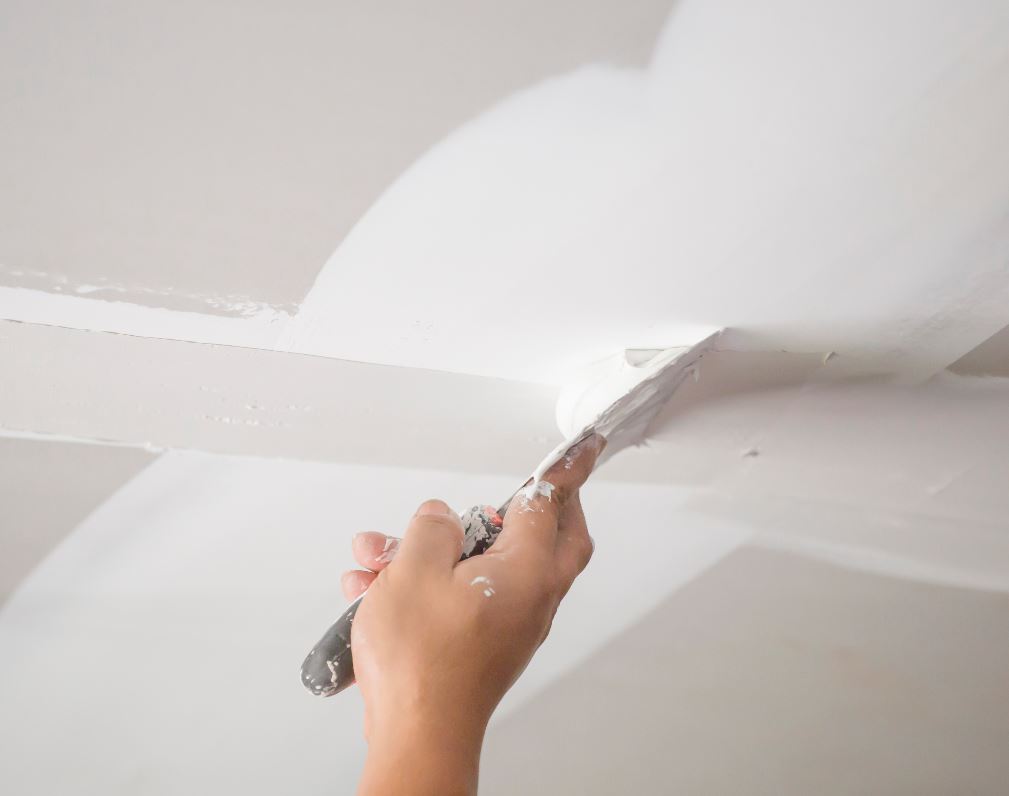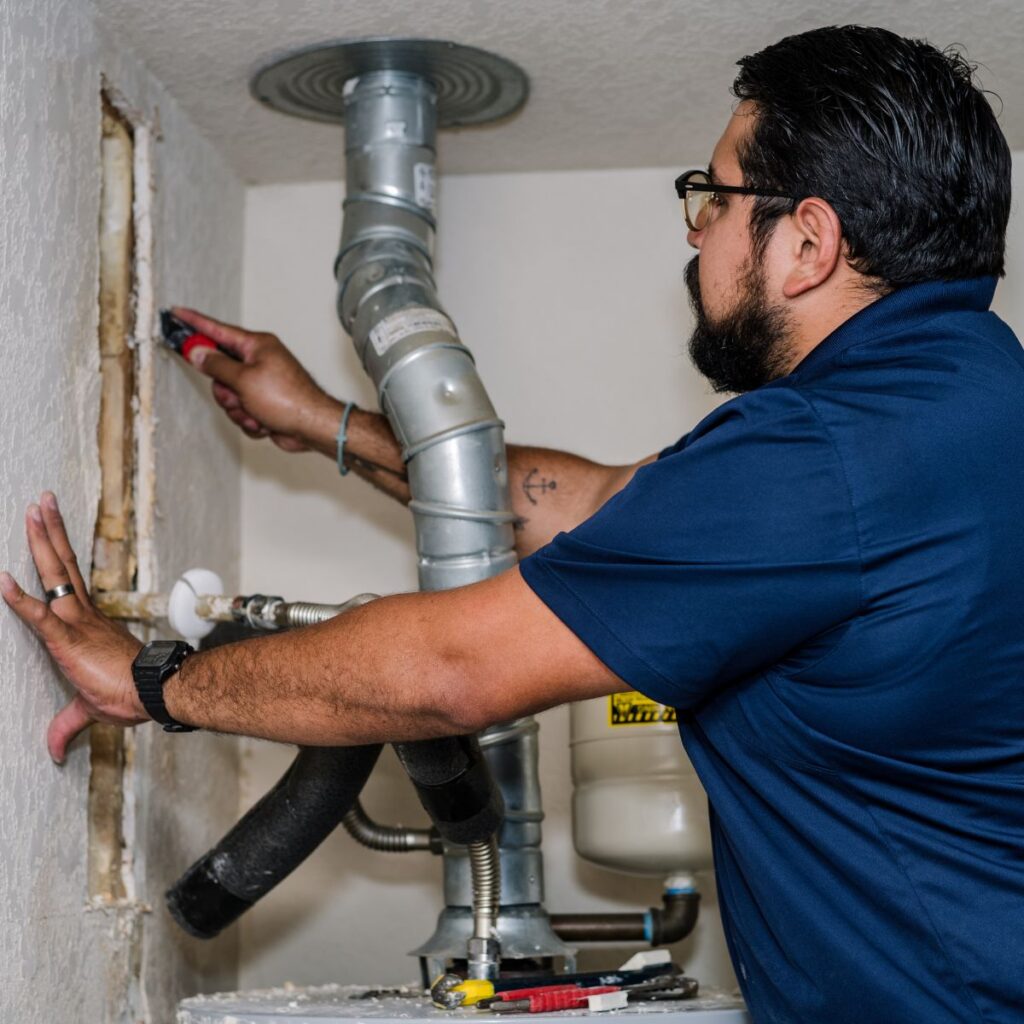Vital Tips for Effective Drywall Repair and Installment Techniques
Efficient drywall fixing and setup calls for a cautious technique. Understanding the kinds of drywall and having the right devices is essential. Proper techniques and precise measurements can considerably impact the end result. Several forget important steps like taping and fining sand, which can make or damage the last appearance. As projects proceed, usual difficulties might arise that require focus. Checking out these tips can bring about a much more successful and refined finish.
Recognizing Various Types of Drywall
Understanding the numerous sorts of drywall is necessary for any kind of effective repair work or installation job. Drywall, frequently called gypsum board, can be found in numerous varieties customized for certain applications. Standard drywall is one of the most commonly used kind, perfect for general interior walls and ceilings. Moisture-resistant drywall, frequently environment-friendly in shade, is made for areas vulnerable to moisture, such as cooking areas and bathrooms. Fire-resistant drywall, normally tinted pink or purple, is engineered to hold up against higher temperature levels and is often utilized in garages or near heaters. Additionally, soundproof drywall assists reduce noise transmission, making it ideal for multi-family homes or recording workshops. Specialized drywall, like concrete board, is utilized in damp locations like showers or tub surrounds. Recognizing these kinds aids in choosing the appropriate product for each task, making certain toughness and effectiveness in repair work or brand-new installments.
Vital Tools for Drywall Repair Work and Setup
Having the right devices is crucial for reliable drywall repair service and installment. A top quality energy blade is crucial for reducing drywall sheets exactly. A drywall T-square aids guarantee straight edges, while a taping blade is necessary for using joint substance smoothly over seams. Additionally, a drywall saw allows for cutting out harmed sections or suitable drywall around components.
For hanging drywall, a power drill with drywall screws is indispensable, as it enables quick and protected installment. A level is also vital to confirm that the drywall is straight and properly straightened. A fining sand block or pole sander is vital for smoothing out joint substance once it has dried out. Finally, a gauging tape is critical for exact dimensions, avoiding waste and making certain a proper fit. Furnished with these tools, individuals can tackle drywall projects properly, bring about professional-looking results.
Step-by-Step Guide to Repairing Holes and Cracks
When dealing with holes and fractures in drywall, having the right devices and materials is vital for an effective repair work. This guide lays out the required things and supplies a clear, step-by-step process to efficiently bring back the surface area. Understanding these components will aid ensure a seamless finish and durable results.
Devices and Materials Needed
A well-appointed toolkit is crucial for effective drywall repair and setup. Trick tools include an energy blade for reducing drywall, a tape step to assure exact sizing, and a drywall saw for larger holes. A putty knife is vital for applying joint compound smoothly, while a sanding block or post sander helps achieve a smooth coating. For patching, a roll of fiberglass fit together tape or paper tape is needed to strengthen joints. Furthermore, a drill and screws are required for securing new drywall items. Important products include joint substance, primer, and paint to complete the repair service. Having these devices and products on hand assures a smoother, a lot more reliable repair work procedure, producing professional-looking results.
Repair Service Process Steps
Fixing openings and fractures in drywall requires a methodical approach to assure a smooth surface. The area bordering the damage ought to be cleaned thoroughly to eliminate dust and debris. Next off, for little fractures, a putty blade is made use of to use a joint compound equally over the location. For larger holes, a spot is essential; the harmed section is eliminated, and a brand-new item of drywall is fitted in location, safeguarded with screws. When the spot is in position, joint compound is used to mix the edges. After drying out, sanding the area smooth is important. The fixed surface needs to be topped and painted to match the surrounding wall surface, ensuring an unnoticeable repair service.
Strategies for Putting Up Drywall Panels
Mounting drywall panels requires mindful planning and exact execution to assure a expert and smooth surface. It is vital to gauge the wall room accurately and cut the panels to fit, making sure that they straighten with the studs. Placing the panels horizontally is commonly advised, as this can boost the structural integrity and decrease the number of seams.
Utilizing drywall screws, installers ought to secure the panels every 16 inches along the studs, making certain a firm hold. It is crucial to stay clear of overdriving the screws, which can damage the paper surface. For edges and edges, making use of an energy knife permits clean cuts and a snug fit.

Completing Touches: Taping, Mudding, and Fining sand
When the drywall panels are firmly in position, the following vital step includes the finishing touches of taping, mudding, and sanding. Insulation is essential for producing a seamless change in between panels and hiding joints. A quality drywall tape, either paper or fiberglass fit together, should be applied over the seams, guaranteeing it adheres properly to the mud that will certainly be applied next.
Mudding, or applying joint substance, follows the taping process. This substance fills gaps and smooths out the surface area. An initial layer needs to be used kindly, feathering the sides to mix with the drywall. After the initial layer dries, succeeding layers might be required for a remarkable surface.
Fining sand is needed to achieve a smooth surface. A fine-grit sandpaper needs to be used to carefully smooth out any imperfections. Care ought to be taken to stay clear of over-sanding, which can harm the drywall - drywall contractors. Effectively executed, these completing touches create a professional look at here now look prepared for paint
Tips for Keeping Your Drywall After Installment
Keeping drywall after setup is important to maintaining its look and architectural integrity. Normal cleansing is required; dirt and dirt can gather, so gentle wiping with a moist fabric is advised. Homeowners need to additionally check for any indications of wetness or mold and mildew, specifically in high-humidity locations like bathrooms and cooking areas. If any damages occurs, it's important to resolve it without delay to prevent more issues.
Making use of furnishings pads can aid avoid scrapes or damages from heavy things. Furthermore, repainting the drywall with a high-grade, washable paint gives an extra layer of protection and makes future cleansing simpler. Avoid utilizing unpleasant cleaners or devices, as these can harm the surface. Ultimately, keeping a steady indoor climate with appropriate moisture degrees will aid protect against fracturing or buckling gradually. By following read here these tips, one can assure that drywall stays in outstanding problem for many years to find.
Regularly Asked Concerns
Just How Lengthy Does Drywall Take to Totally Dry After Installation?

Can I Set Up Drywall Over Existing Drywall?
Yes, drywall can be installed over existing drywall, however it is vital to guarantee the underlying surface area is safe and properly prepared. This technique can improve insulation and minimize installment time, though it might add weight.
What Is the very best Way to Soundproof Drywall?
The most effective means to soundproof drywall involves using specialized soundproofing products, such as resilient channels, acoustic caulk, and sound-dampening drywall. These techniques effectively reduce sound transmission in between spaces, improving overall acoustic efficiency in living areas.
How Do I Select the Right Drywall Density?
To select the best drywall density, think about the application and location. Criterion domestic wall surfaces typically use 1/2 inch, while ceilings or specialized locations might call for 5/8 inch for additional strength and soundproofing capabilities.
Exist Eco-Friendly Drywall Options Available?
Yes, green drywall alternatives are offered. These consist of products made from Learn More Here recycled products, gypsum boards with low volatile natural substances (VOCs), and those utilizing lasting production processes, using environmentally-conscious choices for building and construction and remodelling tasks.
Having the right tools is necessary for efficient drywall fixing and setup. For hanging drywall, a power drill with drywall screws is important, as it allows safe and fast installment. Secret devices consist of an energy blade for cutting drywall, a tape procedure to assure precise sizing, and a drywall saw for larger holes. Yes, drywall can be set up over existing drywall, yet it is crucial to ensure the underlying surface is secure and appropriately prepared. The ideal method to soundproof drywall involves making use of specialized soundproofing materials, such as durable channels, acoustic caulk, and sound-dampening drywall.